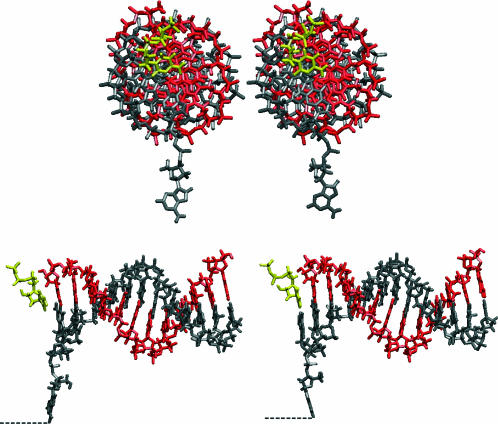FIGURE 3.
(Top panel) Top view (down the axis of the double helix) showing the kinked ss DNA protruding outside the helical boundaries as a consequence of the interactions with the polymerase in both the open (left) and closed (right) structures (same color code as in Fig. 2; protein not shown for clarity). Because tension is applied in the direction coming out of the plane of the article, the resulting torque, acting to align the overhang from an in-plane to an out-of-plane orientation, is expected to have a significant effect on the kinked DNA region. (Bottom panel) Side view of the open and closed structures, (same format as top panel). The direction of the applied force is illustrated by the dotted line. Again, it is apparent that the ss overhang is the “lever arm” of a significant torque contribution forcing the ss segments to orient from a vertical to horizontal position.

